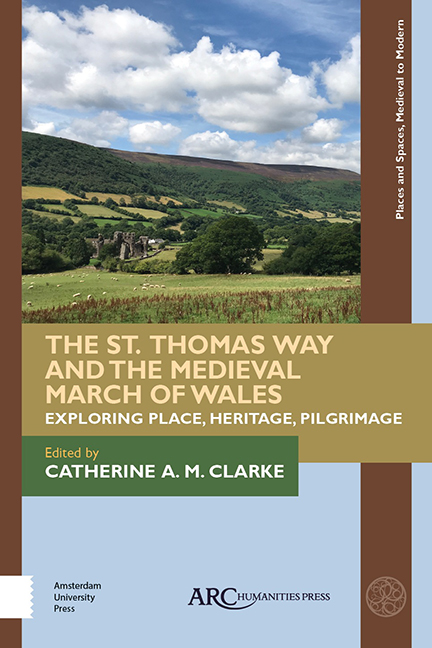Chapter 4 - Archives as Commemoration / Pilgrimage as Interpretation: Hereford Cathedral, the St. Thomas Way, and Cantilupe 2020
Published online by Cambridge University Press: 20 November 2020
Summary
Introduction
At Hereford, pilgrimage comes in cycles for the Cathedral Archivist. “Pilgrimage work” is spurred sometimes by the personal interests of Cathedral personnel and external researchers, but most frequently by the evolving needs of the Cathedral in pursuing conservation projects, commemorating anniversaries, and changing approaches to education, interpretation, and ministry. While in post as the Archivist at Hereford Cathedral, I supported the development of the St. Thomas Way and conducted research and helped plan exhibitions for Cantilupe 2020: the seven-hundredth anniversary of the canonization of St. Thomas Cantilupe.
In particular, at the request of the Dean of Hereford Cathedral, I followed the elusive trail of two chapels in the Cathedral's north porch: a chantry chapel of the Blessed Virgin Mary originally endowed in the decades after the Black Death, and a late medieval chapel dedicated to the Holy Name of Jesus. The Dean wanted to know if it could be proved that pilgrims visited the porch. After all, the late thirteenth-century inner porch features a famous carving of one, and the architecture of the deluxe early sixteenth-century outer porch, with its two staircases, certainly seems designed to facilitate visitor flow. Bishop Charles Booth was also busy granting indulgences to pilgrims in 1518, in the hope that he would be able to finance the building of yet another oratory to take the overflow. After delving through act books, fabric accounts, and articles by historians and archivists who came before me, I did find evidence of offerings made to the shrines in the porch, but Booth's aspiration that throngs of pilgrims would require extra space seems to have been overly optimistic. St. Thomas Cantilupe of Hereford, despite the decline of his cult from its heyday in the time of William Cragh, still held sway, with offerings to his shrine, his relics, and his head.
Yet Booth's porch is quite rightly intended as one of the focal points for future interpretation centring on the role of pilgrimage at the Cathedral for the forthcoming celebrations in 2020. As we shall see, the gaps in the archival record for the medieval and Tudor periods, as well as the physical erasure of pilgrimage sites during the Reformation and later, pose challenges and multidisciplinary opportunities for interpretation, and have inspired creative, community-based commemorative strategies.
- Type
- Chapter
- Information
- The St. Thomas Way and the Medieval March of WalesExploring Place, Heritage, Pilgrimage, pp. 83 - 102Publisher: Amsterdam University PressPrint publication year: 2020



